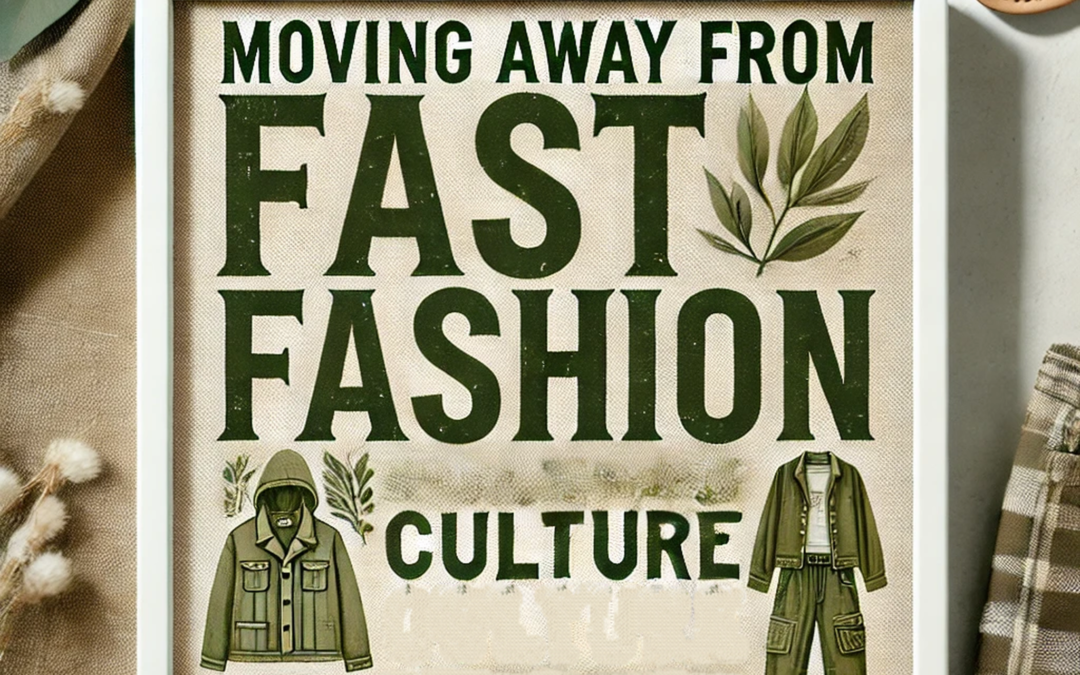
by Purba | Mar 11, 2025 | Academic |
In a world where trends change at the speed of a click and clothing is mass-produced at a rapid pace, Fast Fashion has become the norm. It’s tempting to follow the cycle of constant newness, but this culture of disposable clothing comes with a heavy price – both for the planet and for our personal style. As we become more aware of the environmental and ethical impacts of our fashion choices, it’s time to rethink our approach. “Fashion Detox” is about breaking free from the fast fashion trap and embracing a more sustainable, mindful way of dressing. Moving away from fast fashion culture is essential in third-world countries due to its exploitation of cheap labor, leading to poor working conditions and low wages. It contributes to environmental degradation, as waste and pollution from the industry disproportionately affect vulnerable communities. Overconsumption strains local resources and perpetuates unsustainable practices. Additionally, fast fashion undermines traditional craftsmanship, threatening local economies and cultural heritage. Shifting to sustainable practices promotes fair labor, environmental health and long-term economic stability. Transitioning away from fast fashion culture requires a shift in mindset, habits and consumption patterns. Here are actionable steps to help make this transition:
- Educate Yourself :
It involves gaining a deeper understanding of the impact of fast fashion on the environment, workers, and society. Knowledge can be gained by researching how fast fashion contributes to pollution, waste and unethical labor practices. And also exploring documentaries, books and articles that shed light on sustainable fashion and ethical production. Learning about sustainable materials, fair trade and circular fashion principles. The user should familiarize themselves with brands that prioritize transparency and ethical practices. Following activists, designers and organizations who promote slow fashion on social media for regular insights. By educating themselves, they can become more conscious of the consequences of their purchases and empowered to make informed decisions. Knowledge is the foundation for embracing more sustainable consumption patterns.
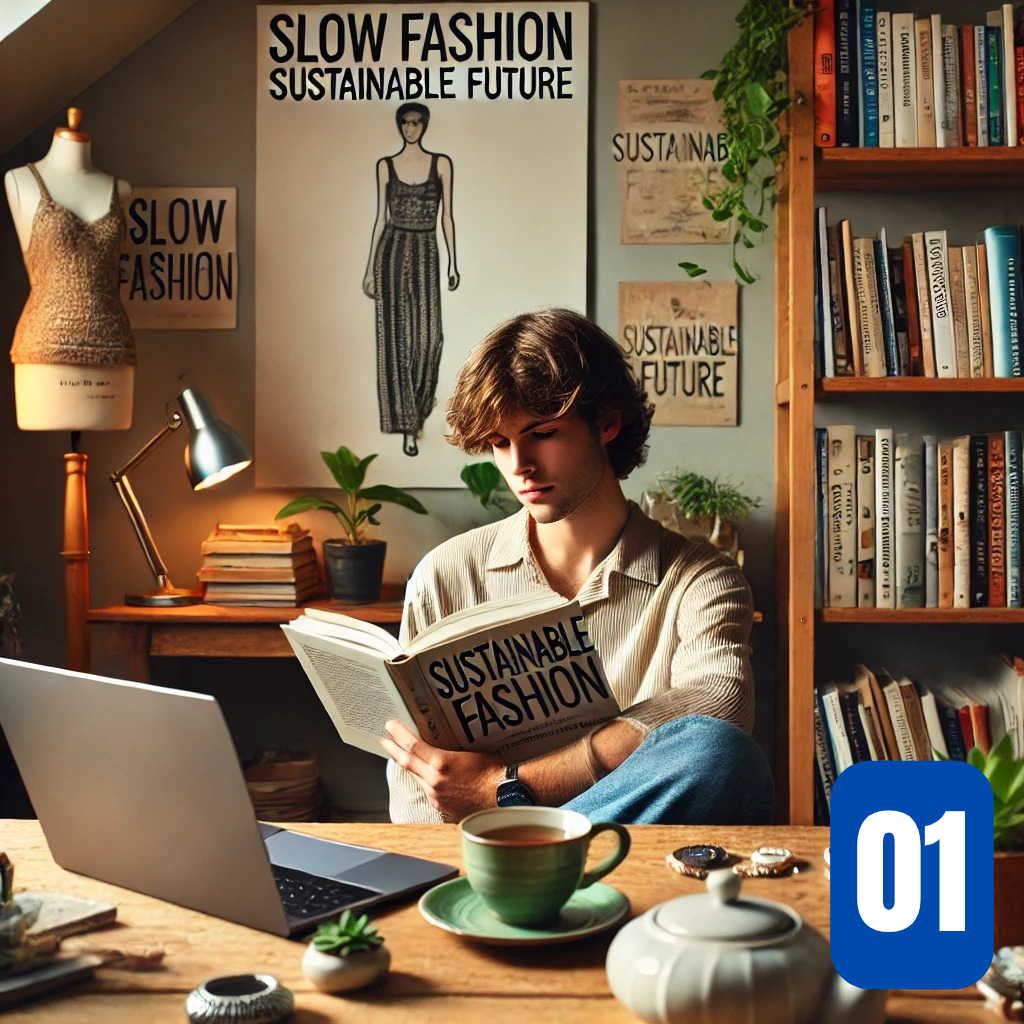
Educate Yoursel
- Adopt a “Less Is More” Mindset :
Transitioning away from fast fashion starts with embracing minimalism in the user’s wardrobe. Instead of chasing trends, users should focus on quality over quantity—choosing timeless, versatile pieces that last longer. A “Less Is More” mindset encourages mindful purchasing, reducing impulse buys and ensuring every item serves a purpose. This shift not only saves money but also minimizes waste and supports sustainable fashion practices.

Adopt a “Less Is More” Mindset
- Shop Secondhand :
One of the best ways to move away from fast fashion is to embrace secondhand shopping. Thrift stores, vintage shops and online resale platforms offer unique, high-quality clothing at affordable prices. Buying pre-loved fashion reduces waste, extends the life cycle of garments and minimizes the demand for new production, which is often resource-intensive. Shopping secondhand not only helps the planet but also allows the users to express their personal style with one-of-a-kind pieces.
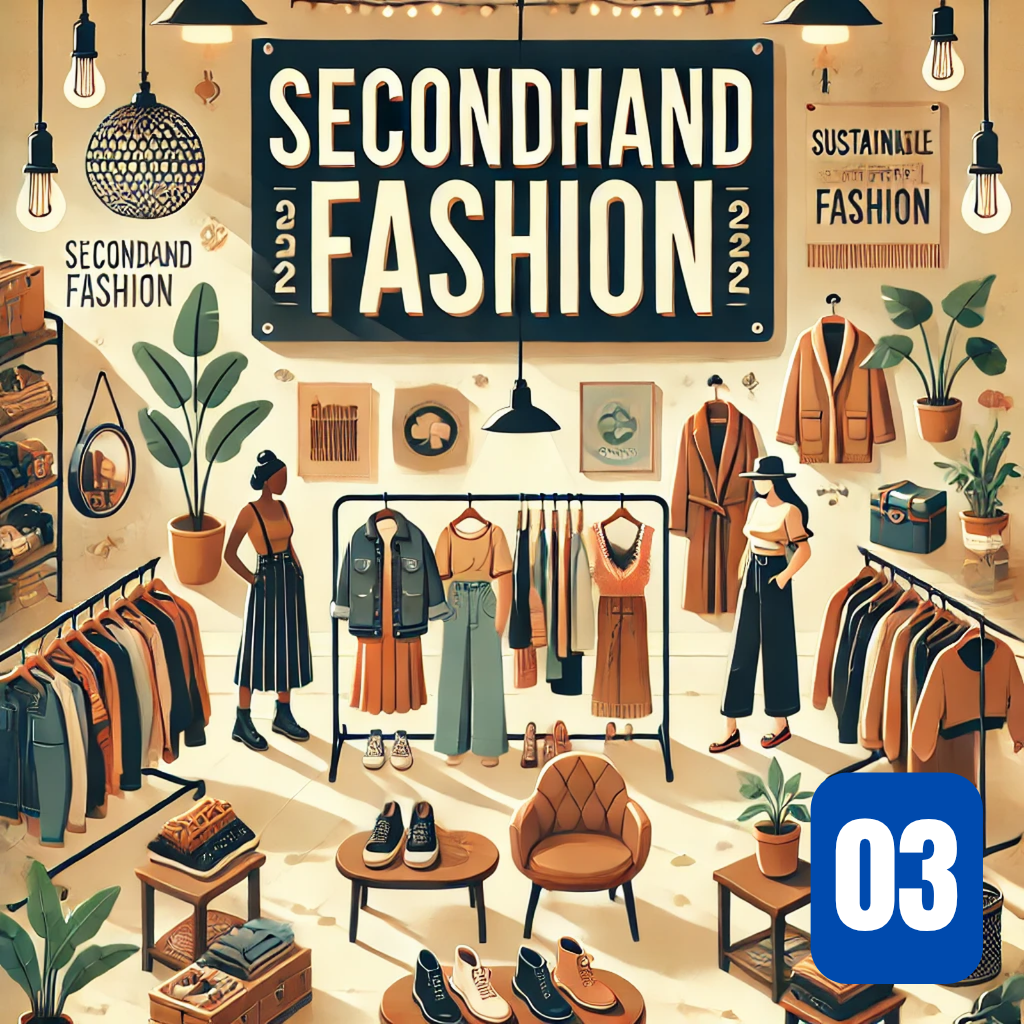
Shop Secondhand
- Support Ethical Brands :
Supporting ethical brands means prioritizing clothing companies that are transparent about their production processes, prioritize fair wages and use sustainable materials. Brands with certifications like Fair Trade or GOTS (Global Organic Textile Standard) are most applicable in this regard. Looking for labels indicating organic, recycled or ethically sourced materials. Purchasing from these brands not only ensures quality but also supports ethical labor practices and environmentally friendly production. This approach aligns user’s shopping habits with values of sustainability and fairness, helping to shift away from fast fashion culture.
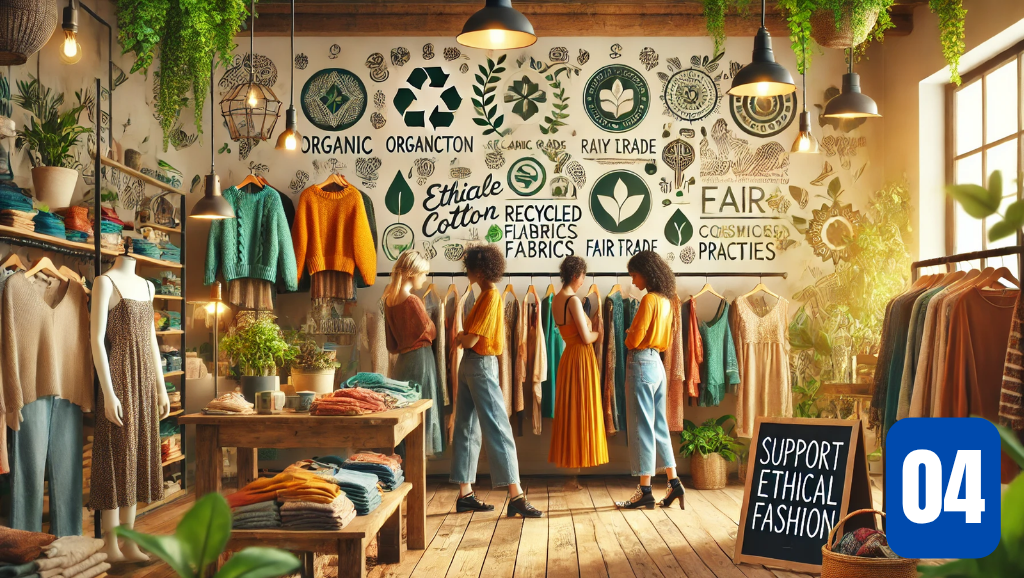
Support Ethical Brands
- Take Care of Your Clothes :
Extending the life of the user’s garments is a simple yet powerful way to combat fast fashion culture. It can be started by following care labels to wash clothes at the correct temperature and avoid harsh detergents that weaken fibers. Air-dry garments instead of using a dryer to reduce wear and tear. Mend small damages like loose buttons or minor tears rather than discarding the item. Store the clothes in a proper way by folding knits to prevent stretching and using padded hangers for delicate fabrics. Rotating wardrobe to evenly wear items and prevent overuse of favorites. Regularly clean shoes and accessories to maintain their longevity. By treating the clothes with care, a user not only save money but also reduce the demand for constant replacements, which helps the environment.
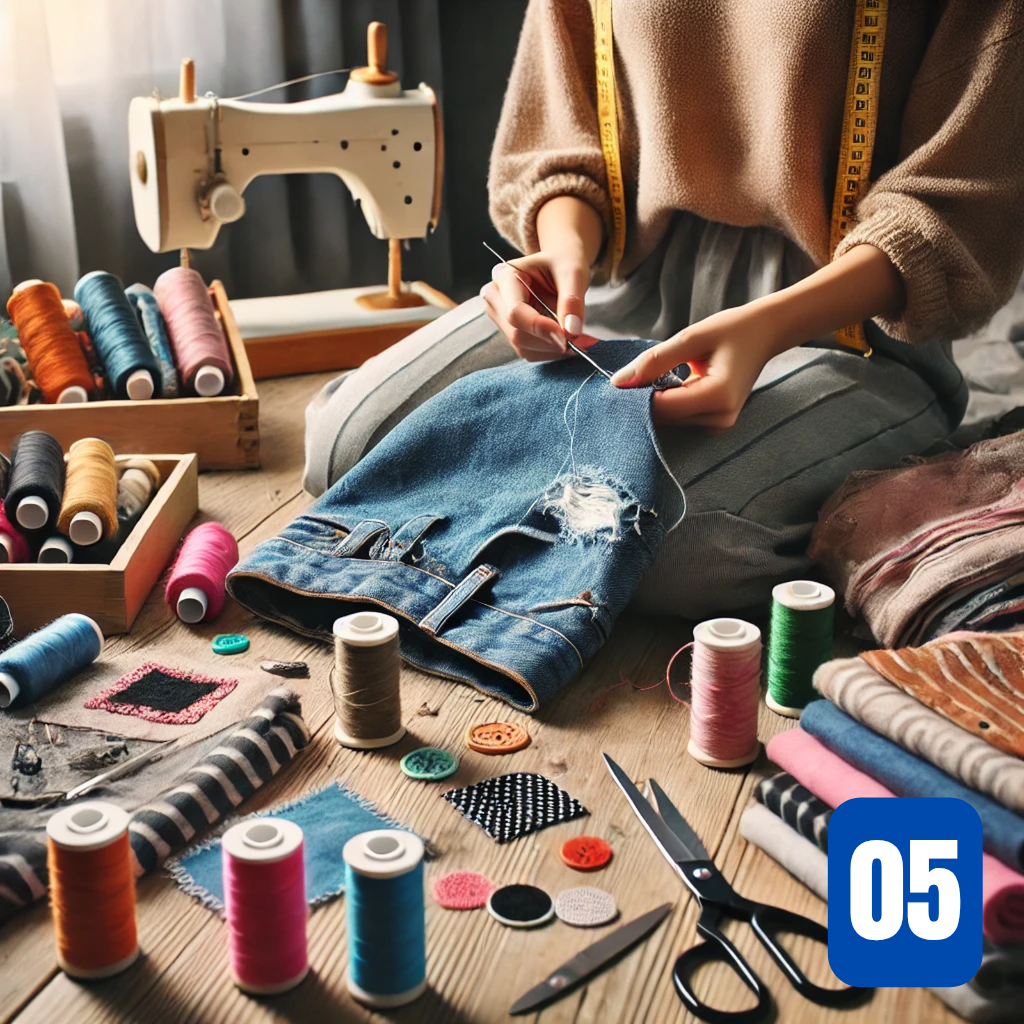
Take Care of Your Clothes
- Rent or Borrow Clothes :
It is an excellent way to reduce reliance on fast fashion while embracing sustainable practices. Instead of buying new outfits for special occasions or events, consider renting clothing from rental platforms or borrowing from friends and family. This approach allows the users to enjoy variety and style without contributing to overproduction or waste. Renting ensures that garments are reused multiple times, extending their lifecycle and reducing environmental impact. For casual or daily wear, borrowing from loved ones can foster a sense of community and sharing. By choosing this option, users can also save money and avoid cluttering their wardrobe with items that might only be worn once. Supporting rental businesses promotes a circular economy and helps normalize alternative consumption patterns.
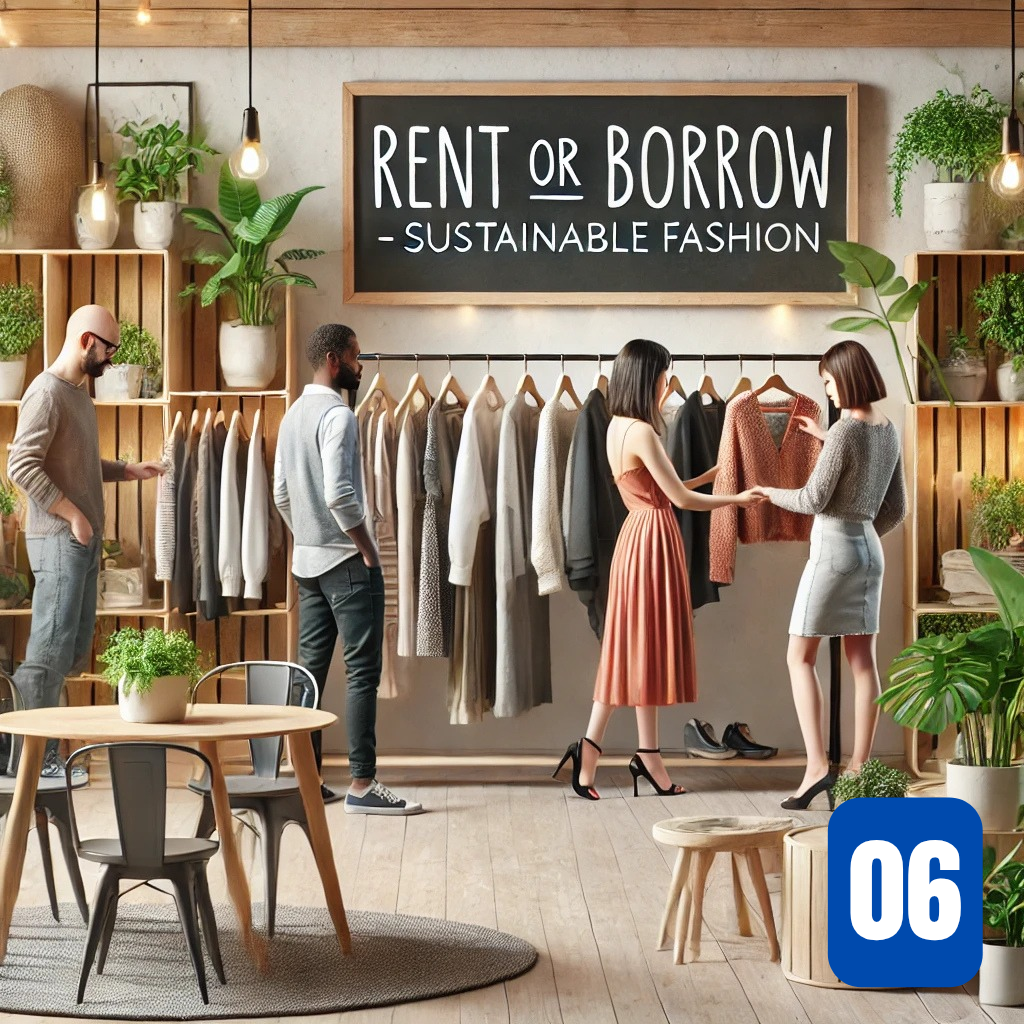
Rent or Borrow Clothes
- Be a Conscious Consumer :
To transition away from fast fashion, users should focus on being a conscious consumer. This involves carefully evaluating the brands and products they support. By looking for items that are made from sustainable materials, produced ethically and designed to last. Prioritize quality over quantity, avoid impulse purchases and choose secondhand or upcycled options when possible. Being a conscious consumer is about aligning their values with their spending habits, reducing waste and supporting ethical practices in the fashion industry.
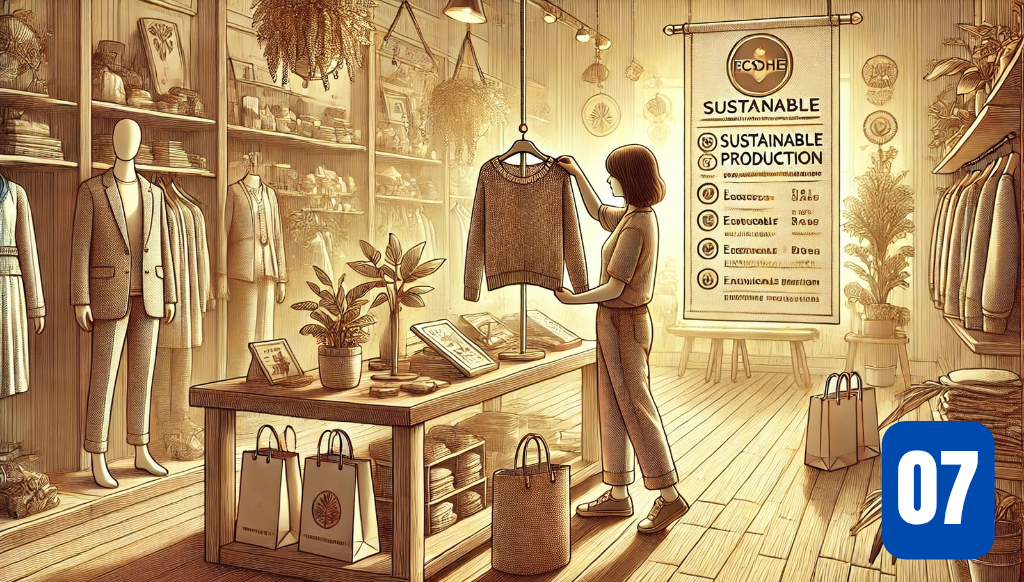
Be a Conscious Consumer
Be a Conscious Consume
- Embrace DIY and Upcycling :
It involves reimagining old or unused clothing to reduce waste and cultivate a more sustainable wardrobe. Instead of discarding worn-out or outdated items, users can transform them into something fresh and unique. This could mean turning an old pair of jeans into shorts, adding patches to a jacket or sewing decorative elements onto a plain t-shirt. Learning basic sewing, stitching or crafting skills can make this process enjoyable and rewarding. Additionally, upcycling allows the users to express personal creativity and create one-of-a-kind pieces that reflect their style. By embracing DIY, they can extend the life of their clothes, save money and reduce the demand for new fast fashion products. It’s a practical way to minimize waste and align the wardrobe with sustainable values.
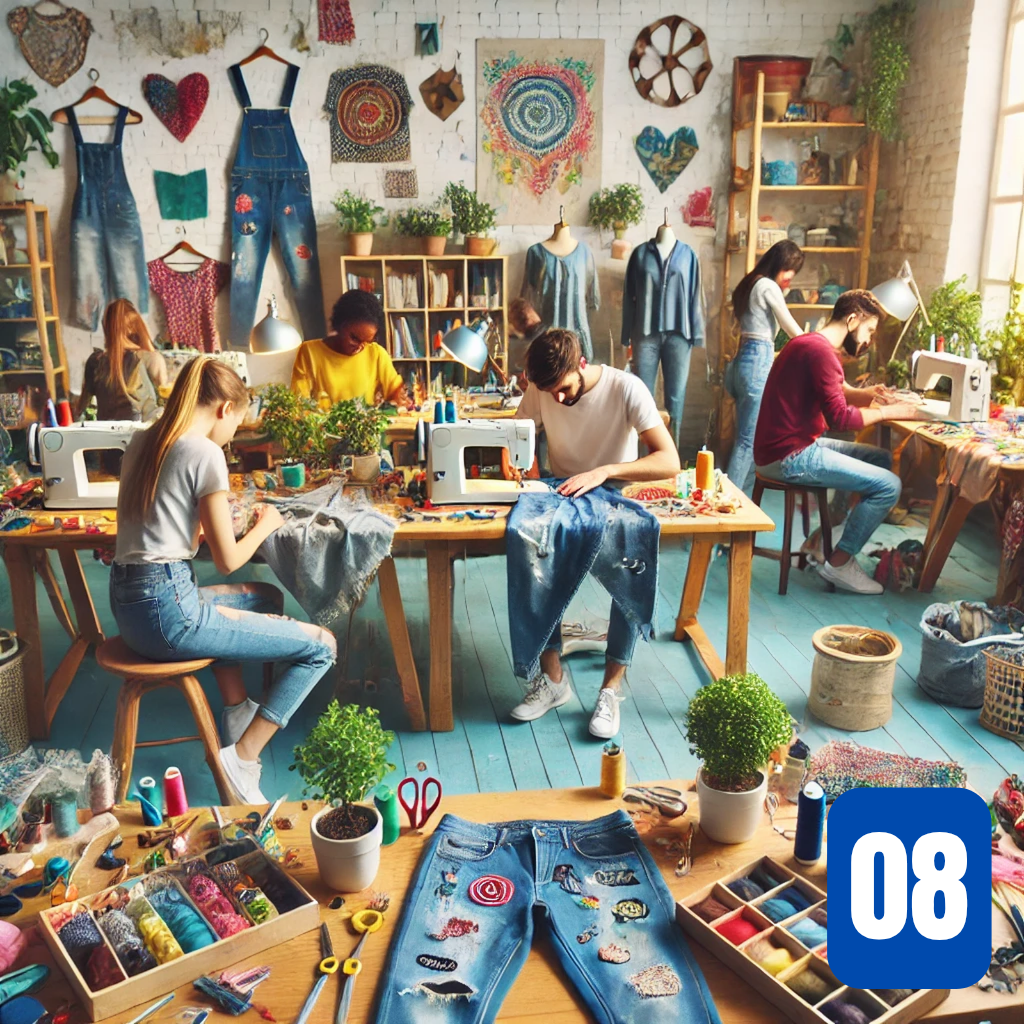
Embrace DIY and Upcycling
Embrace DIY and Upcyclin
- Spread Awareness :
That involves educating others about the environmental and social impacts of fast fashion. One can start it by sharing facts and stories on social media, emphasizing the harmful practices in garment production and the benefits of sustainable alternatives. They can also engage in conversations with friends, family and colleagues to discuss the hidden costs of cheap clothing, such as exploitative labor and pollution. Moreover, supporting and amplifying the voices of ethical fashion advocates and organizations; hosting or attending events like clothing swaps, documentary screenings or sustainability workshops. Encourage transparency by asking brands about their supply chain practices. The goal is to inspire others to rethink their buying habits and collectively demand better standards in the fashion industry.
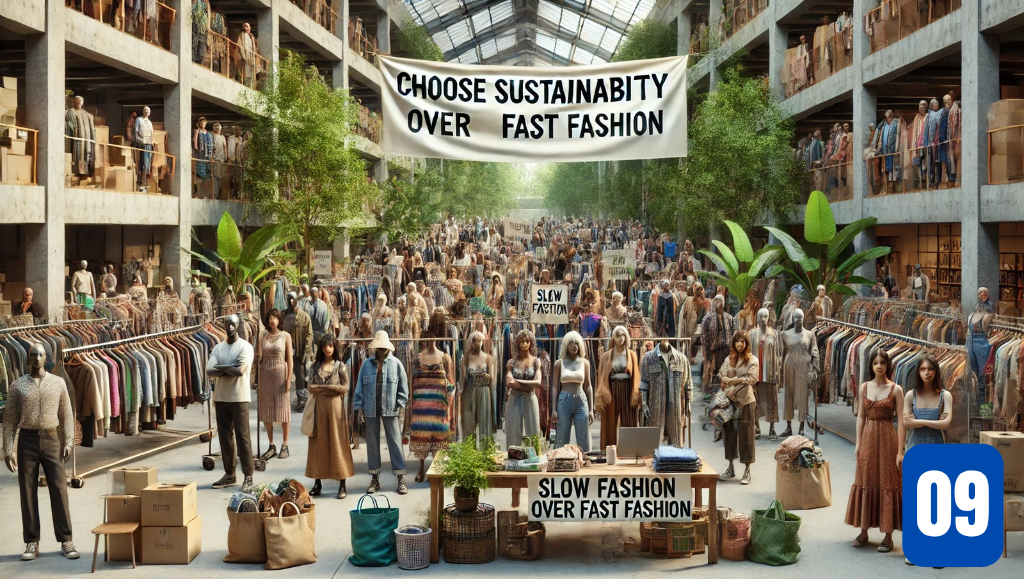
Spread Awareness
- Measure Your Impact :
It involves understanding the environmental and social consequences of users’ clothing choices to make more informed decisions. They should research the carbon footprint, water usage and waste generated by fast fashion brands. Using tools like online carbon calculators to estimate their wardrobe’s environmental impact. Analyze how often they wear items and identify pieces that go unused. By tracking their shopping habits, they can note how frequently they purchase and discard clothes. Consider the broader implications, such as labor conditions and resource exploitation behind fast fashion production. By quantifying their impact, they gain a clearer picture of how their choices contribute to global issues. This awareness can motivate more sustainable behaviors, like choosing quality over quantity and supporting ethical brands. Measuring their impact turns abstract concerns into tangible goals for reducing consumption and waste.
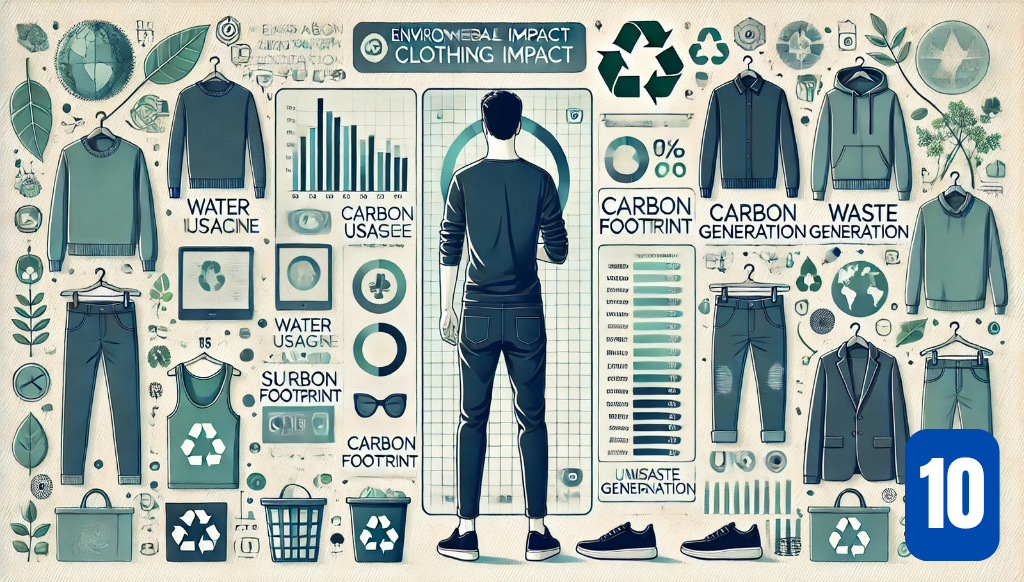
Measure Your Impact
Embracing sustainable alternatives to fast fashion is not just an environmental responsibility but also a step toward social and economic justice. By supporting ethical practices, we can empower workers, protect natural resources and foster local industries. It is a collective effort that requires mindful consumer choices and advocacy for fair policies. The journey toward a Fashion Detox is personal, but it’s one that has the power to transform both our closets and our world for the better. Transitioning away from Fast Fashion ensures a more equitable and sustainable future for all. Together, we can break the cycle of exploitation and environmental harm. Let’s choose timeless style over temporary trends and be part of a fashion revolution that values longevity over speed.
SUDIPTO BANIK
University: Bangladesh University of Textiles (BUTEX)
Dept: Textile Fashion & Design (TFD) Batch: 47 ; ID: 202116019.
Feel free to write to us at fashionnovationfd@gmail.com
Feel free to see our other articles:
Woven Futures: Fashion Beyond the Present

by Purba | May 3, 2021 | Fashion and sustainability |
It is a common consideration to believe that the ‘small’ amount of unsound household waste each individual produces, creates such a minimum impact on the world. But if you take into detail there are approximately 7.4 billion people in the world, this number becomes horrible. The amount of unsound waste generated and disposed of, in the United States alone, is measured to be 7.6 billion of tons per year! Most of the wastes that are filling our oceans and landfills are enduring for quite a long time. And what is the saddest part? The fashion industry is one of the most wasteful industries. Undoubtedly, in the last 15 years, this glorious industry has doubled its production, but at the same time, the concept of wearing clothing before it is thrown away has declined by 40%. An average consumer throws away 70 pounds (31.75kgs) of clothing per year! Globally about 13 million tons of textile waste is produced each year. These trends of making waste are not only killing our planet or impacting on public health, but also they are bounding the opportunities for the fashion industry to succeed in the distant future.
The Story of The Rise of The Phoenix- An Invisible Bond with Modern Fashion
According to Greek Mythology, it is said, the glorious ancient bird Phoenix is capable of its rebirth. A Phoenix is said to live only once at a time. When the time comes, unlike any other birds, a Phoenix would die by setting itself on fire, only to produce mysterious ashes. The ashes from where a new Phoenix would be born! Thus, a new and powerful Phoenix regenerated from the silver ashes of its predecessor.
Modern fashion activists can relate to this concept of rebirth and regeneration. The wastes produced from the industry can be depicted as the new definition of ashes and of course, the upcycled creations from these wastes would be our new Phoenix! Nonetheless, the household or textiles wastes can be the opportunity to make new fashion and be the new hope for saving the planet.
10 Fashion Brands to Regenerate New Designs from Waste
Many fashion brands have already been working on waste and designing out of it in an innovative way. Let’s get to know some of these fashion brands and how they challenge waste to create sustainable fashion!
Ecoalf
Ecoalf, a fashion brand of Spain produces clothing and accessories from recycled materials. Their main motto is to use a lesser amount of natural resources and utilize high amount of plastic wastes. Hence, they recover nylon waste (fabric scraps, fishing nets from the oceans and carpets), plastic bottles, cotton, coffee grounds and more to create fabrics and products. But its main target is recycling plastic waste collected from the bottom of the oceans. Ecoalf definitely contributes themselves in the production of garments made out of 100% recovered plastic as they claim, “There is no planet B where we can live in.”
Collina Strada
Collina Strada is a clothing brand created by Hillary Taymour, whose main concern is sustainable fashion while still keeping their individuality. This brand makes brightly colored dresses with unusual designs from deadstock fabrics. It recycles cotton T-shirts, water bottles and prints on deadstock too. Besides, it works for reducing waste, the brand focuses on incorporating innovative new materials such as fabrics made from rose petals which is known as Rose Silk!

Image 2: A vibrant Collina Strada creation for PreFall Season 2021.
Hôtel Vetements
Hotel Vetements is a French-Danish love affair by the Danish Fashion Designer Alexandra Hartman. The journey started with the transformation of high-quality yet old curtains to sophisticated pieces of modern clothing. Moreover, the brand creates upcycling, artisanal apparel not only from forgotten curtains and upholsteries but also from hand-embroideries, linen textiles, tablecloths, cotton sheets from provence and much more. As a result, each garment has their own style of vintage effect. More so, no two items are similar. They support uniqueness and imperfection of each beautiful artifact.
Zero Waste Daniel
Zero Waste Daniel is the first company making 100% zero waste apparel. This company uses pre-consumer waste sourced from New York city’s garment industry and other hard-to-recycle materials to make genderless clothing and accessories with artistic creations. Many of their unisex garments are textile off-cuts produced by the fashion industry. These off-cuts are stored in tiny jars and later used to be used in the making of casual wear garments. The brand, hence, recreates textile by products as well as inspire people to rethink about waste and reduce their impact.

ZWD storage of scraps of fabrics in tiny jars. Courtesy: Vincent Tullo for The New York Times
Iro Iro
Established by Indian daughter of a garment factory owner, Iro Iro is a sustainable design practice where each product gets new life from pre-consumer waste fabric. Then, this fabric is woven by hand outside of Jaipur into a rich textile fabric. Artisans take advantage of this handwoven, upcycled textiles to create ingenious clothing and accessories through zero waste cutting techniques. During the processing, Iro Iro establishes the essence of Indian craftsmanship and tradition.
E.L.V DENIM
Anna Foster, a Stylist and Creative Director, is also the founder of E.L.V. Denim. This brand upcycles unwanted jeans and jackets and transforms them into modern sophisticated pieces of clothing. Their recycling journey starts by taking unwanted jeans from warehouses around the United Kingdom. Then the washing process starts using a local East London launderette called Cleanex run by Korosh Murad. This washing process is vital which removes unnecessary materials from the discarded pieces of denim. Cleanex is well known for using only 7liters of water to wash the fabrics, where a brand new pair of manufactured jeans would require 7000liters! After washing, the denims are measured and sorted for the atelier. All the jeans are cut manually and made by using traditional denim methods. Even the labelling has their concept of sustainability. The labels are made from scraps of unused pieces of leather, ensuring the zero-waste policy! Thus E.L.V. completes their mission of preparing neoteric sustainable dresses without environmental pollution, assuring what the designer, Anna Foster, herself quoted-
“Sustainability is the ultimate part of what I do. We live in a very aesthetic world, so a successful brand has to marry carefully the two of them together.”

Image 4: Anna Foster with waste denims collected throughout UK. Courtesy: elvdenim.com
Doodlage
Kriti Tula is a designer, also the Founder of Doodlage Retail. She and her Doodlage team upcycles industrial waste fabric into wearable fashion, upholstery and accessories. According to the article of Reverse Resources, about 12 million tons of post-consumer textiles are available to be reused and upcycled. Relating to this concept, Doodlage generates pieces from tattered textiles and materials found. Therefore, they hunt for the ragged material first, and enter into the design process second. They collect all sorts and sizes of fabrics, from under 100 meters to very short ones. All the relevant fabrics are then mixed and matched with a follow-up of patching, embroidering and more. This is how Doodlage pieces are restored to life.
Christy dawn
Christy Dawn is the founder of Christy Dawn. She and her husband launched the company. It consists of dresses made with only deadstock fabric. The question is, what is exactly deadstock fabric? Normally, deadstock fabrics are those that are old and unable to be sold. In modern era, deadstock fabrics particularly refers to all those that are left over from other fashion houses. Before they are thrown away in the landfill, Christy Dawn and team, rescues these deadstock fabrics and turn them into dresses. But one of the disadvantages they follow is that, when they use deadstock fabrics, they are limited in the number of dresses they can make, as there are not unlimited amounts of fabric to be used to make a full fashionable garment.
Outerknown
Designer & Surfer John Moore co-founded Outerknown with 11-time world surfing champion Kelly Slater. From their very start, this brand had a challenge to build sustainable products. The brand makes comfortable and casual beach style clothings rooted in longevity and transparency. Over 90% of Outerknown’s products are made from organic, recycled and regenerated fiber and materials. One of their most amazing route to sustainability is the use of Econyl! Econyl is a type of nylon made entirely of wastages. Since Outerknown is highly inspired by beach styles, due to the inspirations collected from the 2 surfer co-founders, this brand collects fish nets to turn them into econyl fibers. It is one of their fascinating ways to clean the ocean!

Famous S.E.A Jeans by Outerknown- an outcome from 98% organic cotton that lasts long. Courtesy: outerknown.com
Insecta
The founders of Insecta are Pamela Magpali and Barbara Mattivy. It’s a Brazilian shoe label that transforms fabrics and prints from vintage clothing into vegan footwear. Not only that, this brand is highly known for their application of plastic bottles in the manufacturing process! Insecta makes awesome fashion lines that includes shoes, desert boots, sandals and Chelsea boots using recycled plastic, unwanted rubber and second-hand textiles materials.

Image 6: A printed Insecta shoe made entirely out of plastic! Courtesy: shopinsecta.com
It is certain, any upcycled textile reduces the chance of negative environmental impact. Anything that is made out of waste, now is a new way of thinking and creating fashion in a different manner indeed, just like a Phoenix would start its life anew!
By Team Bespoke,
Mentor: Tasphia Zaman (TFD 44, ID: 2018-1-6-009)
Leader: Khadiza Sharmin (TFD 45, ID: 2019-1-6-015)
Executive: Nahema Haque Khushe (TFD 46, ID: 2020-1-6-002)
References:












